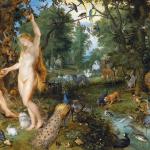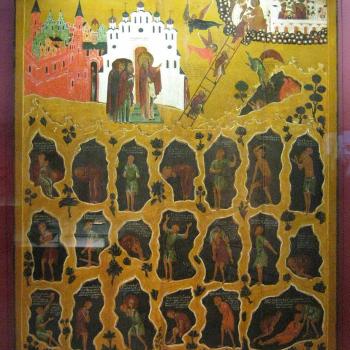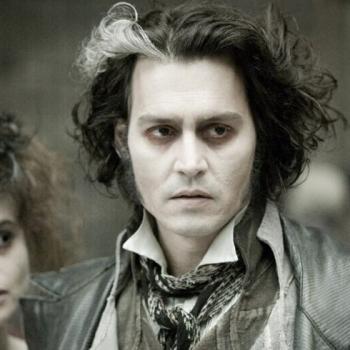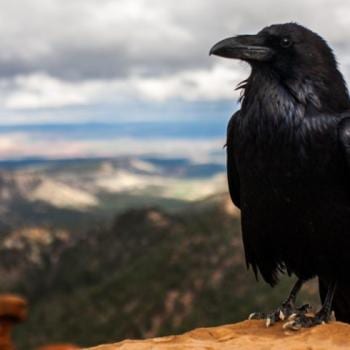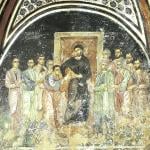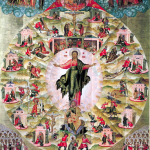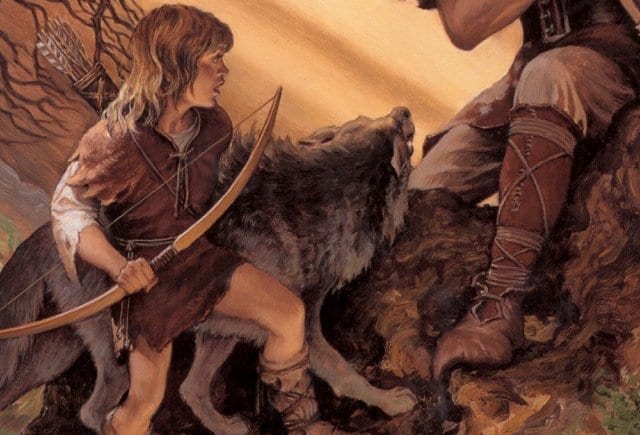
As most of my loyal readers know by now, I have long had a love affair with Robin Hood since first watching the Disney cartoon at the tender age of six. This love gave rise to my love of England, and from there, the whole of the British Isles. If you ever come to my humble abode, I will happily show you the abundant array of fan-girl memorabilia lovingly arranged on my display shelf, including Robin Hood books, videos, DVDs, puppets, lunch-boxes, etc. I will also probably make you my captive audience as I weave some of my own Robin Hood tales on the spot, like a bard of old.
Hence, when I went to the library one day and stumbled across Tales of Rowan Hood in the Young Adult Fiction section, my interest was piqued. The author, Nancy Springer, had chosen to focus on the daughter of the famous outlaw, with some of fantasy elements woven throughout. At first, I hesitated, as these types of retellings could be teeth-pulling-ly painful, especially if too much pixie dust and girl-power was tossed into the medieval soup. And yet, I decided to be bold and checked out the entire series of Tales at the same time. Ultimately, I read all five in the series: Tales of Rowan Hood, Lionclaw, Outlaw Princess of Sherwood, Wild Boy, and Rowan Hood Returns.
Slowly, I had to admit that they weren’t bad enough to make we want to abandon ship; in fact, it was good enough to keep me hooked until the very last line. Nancy Springer writes in a flowing, lyrical style, weaving words like a poet with an almost musical quality. She also has a clear handle on how to create colorful characters and vibrant settings, as well as balancing suspenseful pauses with exciting action sequences. As a result, her Tales prove to be page-turners from the beginning of Ro’s journey to find her father, “The Prince of Thieves”, to her climactic encounter with Guy of Gisborne, “The Man with No Soul.”
Springer also utilizes an original combination of the traditional Robin Hood legends and fantastical, pseudo-Arthurian elements. Some parts of her stories are direct take-offs from the legends of King Arthur, including the incident of the brother knights slaying each other in battle. In certain ways, the creativity behind this blend is appealing, and is sure to introduce a whole new generation of fantasy lovers to Robin Hood for the first time. But in other ways, I personally feel it can undermine the charm of Robin Hood that first captured my heart as a child. For me, the whole concept that the stories of Robin Hood was real enough to have really happened was grounded in the fact that magical elements were completely absent.
One of my main pet-peeves about the plot has to do with Robin’s liaison with an Elf-woman in the woods, and no mention of Maid Marian in the whole of the series. For this wanna-be-girl-in-Lincoln-Green, it just felt wrong somehow. I concede that Marian may have been a later addition to the early ballads, but she is far too established in the legends at this late date to simply write her out of the script and replace with with another paramour without it feeling like Robin is cheating. Furthermore, the Elvish interference turns Rob into a wood-side womanizer, having flings with mythical creatures at random.
To make matters worse, the reason given for Robin’s uncanny ability to avoid capture in his outlaw career is that his elf girl-friend in the wings has cast a spell to prevent him from being recognized. This is totally ruinous to the character of Robin Hood, who has always stood out as something of a self-made-man who survives through his own cunning. In undermines his foxy cleverness, his talent for disguise, and all the things that make him appealing. Here we see hearty realism being exchanged for easy-fix, cop-out magical solutions, and it just doesn’t sit right in the setting.
To be fair, Robin is at least portrayed positively in the series, which is not what I can say for some other retellings. We do get to see his tender side with his daughter Ro, her assortment of youthful companions, and the ill-treated son of the Sheriff of Nottingham, young Tod. Torn between his own mistreatment and remaining undercurrent of loyalty to his father, Tod is probably one of my favorite characters in the series. He shows strength of character that is unexpected, considering how hard-core rotten his father is, and Robin Hood goes the extra mile to affirm that and become a true father-figure to him. It goes to show that even a bad man can have a good son, and no one should be judged by the previous generation.
That having been said, turning to the main character, I do wish that Ro’s character had been more deeply explored. Much of the time she is so absorbed in her quest to avenge her mother’s death, or live up to her father’s reputation, her own personality and purpose remains blurred and brooding. Her relationship with Robin Hood seems tinged with a sense of competition, and R.H. comes off as being unsure how to properly relate to his daughter or be a leader of men in a convincing way. Indeed, on the whole, his persona seems limp, lax, and uninspiring. He’s gone from an Outlaw Prince ruling the greenwood to a Deadbeat Dad who’s in over his head.
This follows suit with the constant push to create a female equivalent of R.H. I’m not opposed to a female compliment for him, specifically in the person of the spirited Maid Marian. But she should never be trying to take Robin’s place, or make him somehow obsolete. Rowan Hood, like Gwen in Princess of Thieves, is basically there to out-shine her father. Also the whole plot gimmick of Rowan doing “one better” than her father by teaching the peasants how to make money belies the main point of the original tales: the people were being brutally over-taxed and oppressed, and Robin was in essence stealing back and restoring what had been taken from them.
Another issue I have has to do with Princess Etarde and how she supposedly comes from some “petty kingdom” in or around England. Okay, this is supposed to be King Richard’s England; there were no “petty kingdoms” in that territory. I suppose she could be the daughter of a chieftain from Ireland or a petty prince on the continent. But it doesn’t seem that Springer is at all concerned with giving a historically congruent explanation, and that’s what makes it all feel quite sloppy. She is using a fantasy gimmick, taken out of the Arthurian Cycles or The Lord of the Rings, even though she references different historical figures and events simultaneously. Its a strange, and for me, rather unsettling overlay.
Again, even though the setting is purportedly medieval England, Christianity hardly plays any part in the series and the characters often seem to be nature-worshipers. I certainly don’t mind the inclusion Pagan elements in traditional stories mixed themes and symbolism. But in this case, we’re dealing with medieval England, which was a deeply Christian society. As opposed to an emphasis on “The Lady of the Wood”, Robin would have been praying to the Blessed Virgin Mary, to whom he is shown as being staunchly devoted in even the oldest variants of his legend. Skipping over the predominant religious beliefs of the time and place seriously alter the unique flavor legends.
But on the positive side, the author does do a good job with character contrasts, and I appreciate how each book is written from a different character’s perspective. This made it much more diverse and engaging than sticking strictly to Ro’s point of view. We are given the chance to see through the eyes of Lionel, the mystic minstrel whose father believes him to be illegitimate; of Etarde, the philosophical princess whose sadistic father has locked her mother in a cage; and of Rook, the “wild boy of the woods” who is on a quest for vengeance after his father is left to die in a forest trap by the Sheriff of Nottingham. All of them are commendably multi-layered and sympathetic, yet bound together by their common complex paternal relationships. I am rather disappointed that Springer ended the series before going into more detail about Beau, the faux-French-accented Gypsy with a mysterious past. Perhaps that will provide ample material for some future sequel.
Out of all the books, I would have to say the final volume, Rowan Hood’s Return, has the most going for it in the way of a meaningful analysis of life and spirituality. The concept of Guy having “no soul”, thus preventing the elves from helping Rowan confront him, is a fascinating concept…although according to Catholic theology, even the most hardened sinners do have souls, and thus all human beings have the capacity to be redeemed. Beyond that, however, I appreciated how it was shown that Ro’s obsession with revenge actually causes her lose contact with her Elvish ancestors who she has often communicated with in the woods. Furthermore, as she continues on her journey to track down the men responsible for killing her mother to administer vigilante justice, her legs weaken to the point where she can barely walk.
After various encounters along the route that open her heart more and more to her own humanity and calling to be a healer, the conclusion (warning: spoilers!) results in the restoration of Ro’s soul and the healing powers she inherited from her mother, the herbalist wood-wife adept in Elvish magic. I was also pleased how, in the final confrontation with Guy of Gisborne, Robin Hood does finally do something overtly heroic and saves his daughter life in a manner very congruent with the original source material. (That’s-a my boy…better late than never!)
All in all, in spite of its various foibles and discrepancies, I am glad to have read Tales of Rowan Hood. The main themes of the series are the importance of familial relationships (whether by blood or emotional bond) and the power of forgiveness, as well as ostensibly “every teen’s search for self.” Perhaps that’s a bit of stretch, but still, maturing in compassion under unforgiving circumstances is a major theme. Even though the father-issues that the characters have to deal can become a bit redundant, it does enable them all to grow in new ways. Indeed, even though I may not be a fan of Ro, she certainly does come off as a more well-rounded and sympathetic character before the curtain finally closes.
So overall, I give the series 3 out of 5 stars, and would recommend it as a fairly entertaining and occasionally profound non-canon fan-fiction-esque romp through the greenwood…in spite of my allergic reaction to the excessive amount of forest pixie dust, Elvish interlopers, and dead-beat dads!


